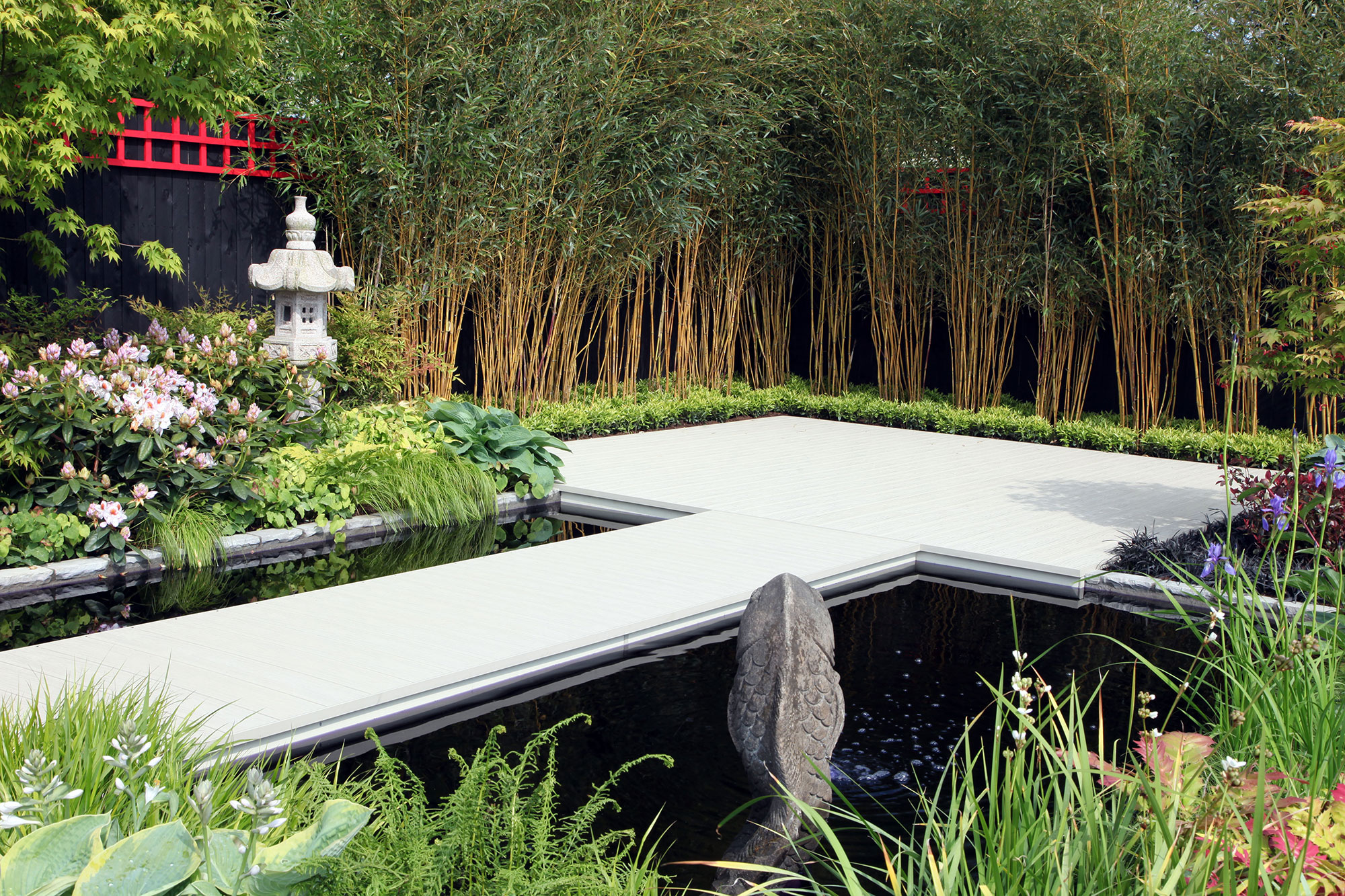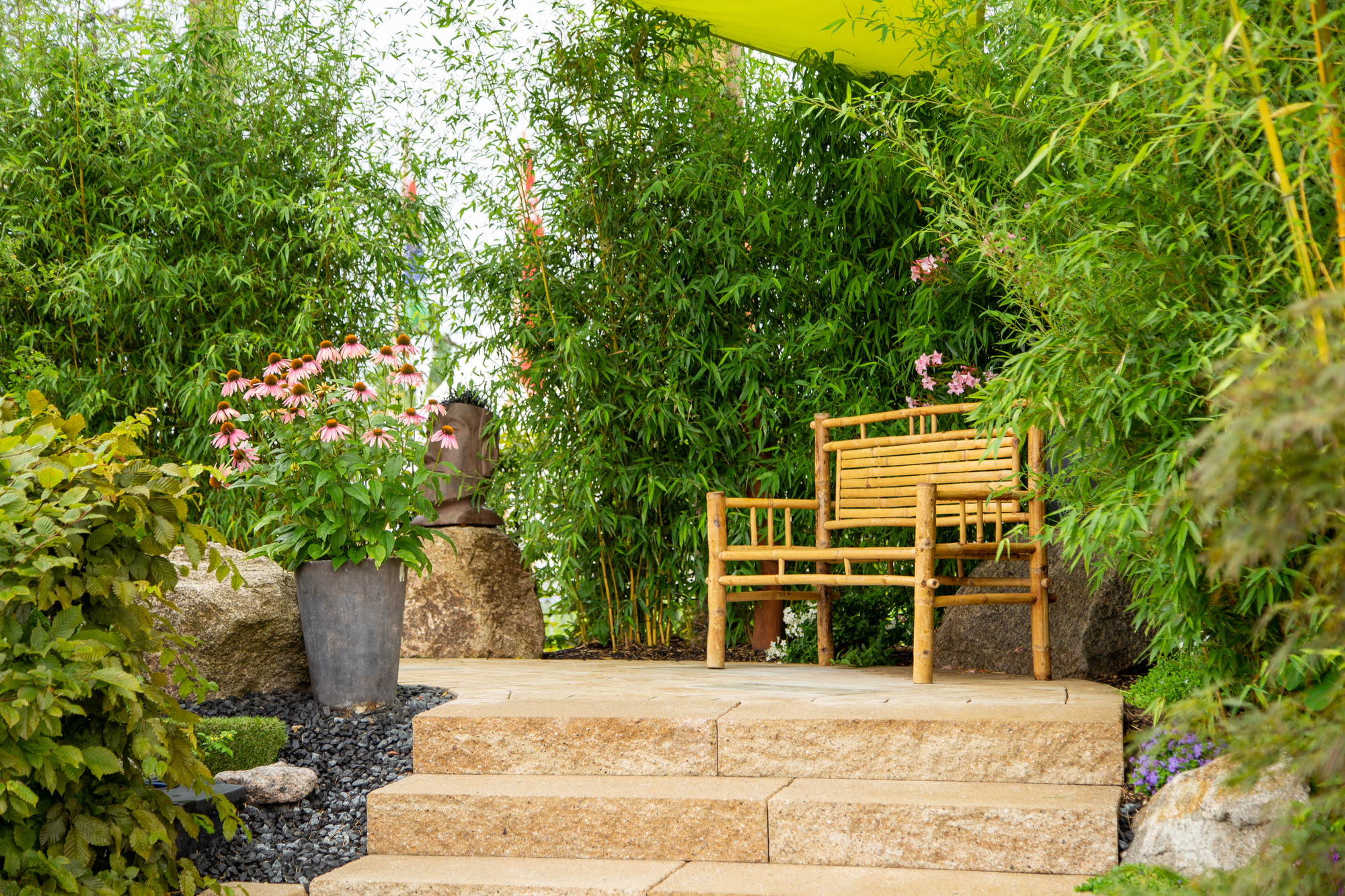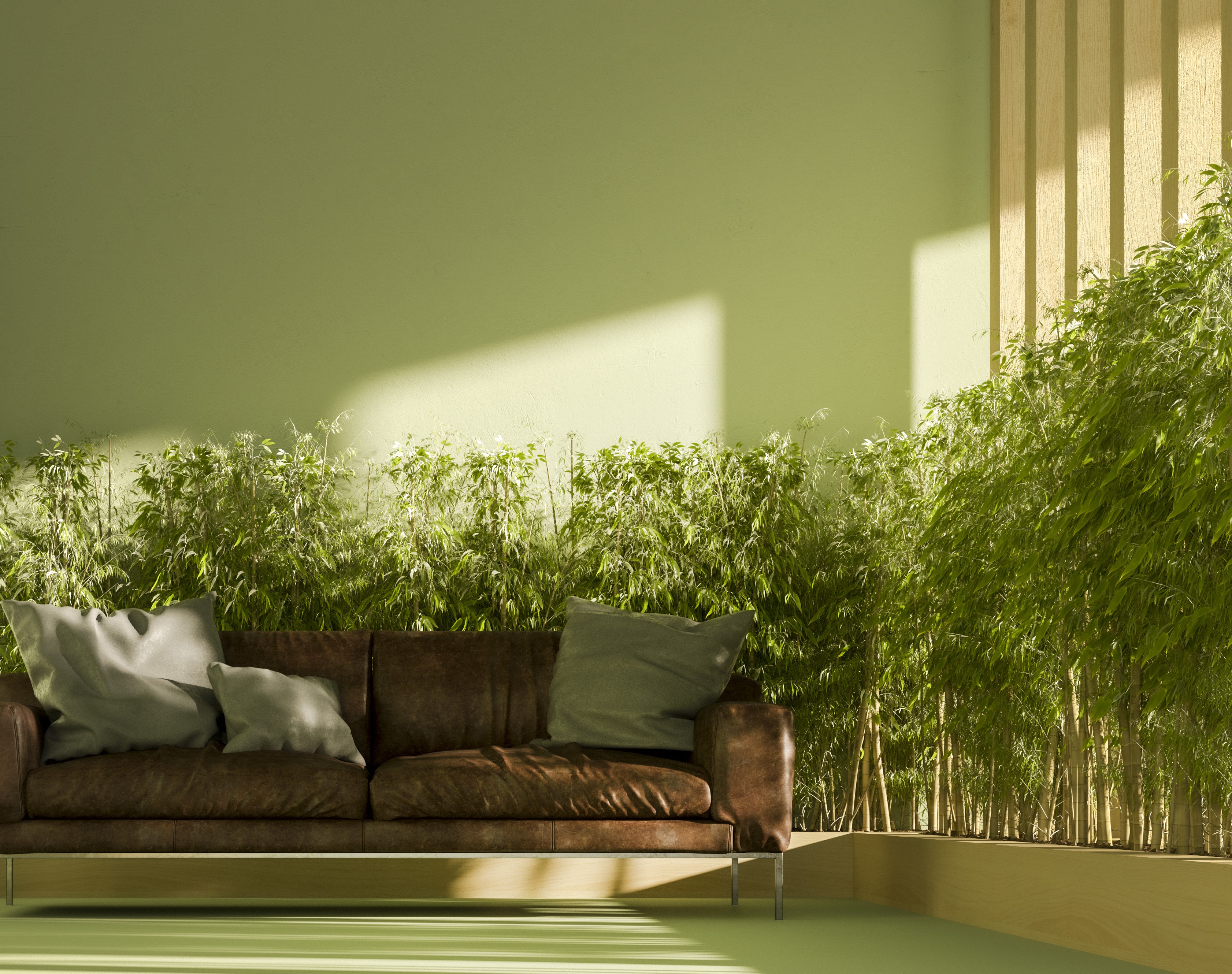
Saving a bamboo plant that's dying is absolutely doable, whether yours is an indoor potted plant or growing outdoors in containers or borders.
An evergreen that prefers moist but free-draining soil, it's one of the best plants for privacy, and while it's easy to look after, it's not maintenance-free. 'Bamboo is one of the fastest-growing plants and thrives in many different regions and zones,' say Mel Brasier, Garrett Magee, and James DeSantis of New York-based designers and landscapers The Manscapers. 'Bamboo is not the highest maintenance plant – but because it grows fast, you have to take specific care of it, including constant trimming and maintenance.'
We asked gardening experts how to revive bamboo plants, whether grown indoors or out. This is what they said.
Signs your bamboo needs reviving
Like most plants, your bamboo will give you early signs that it's unhappy. The main clue that a bamboo needs saving is that the green leaves will yellow and drop. Yellow leaves on bamboo won't turn green again, and you may even lose some stalks of your plant. However, that doesn't mean your bamboo is beyond saving entirely. In fact, with the right conditions, it will recover, and new shoots and stalks will grow back.
6 steps to saving a dying bamboo
Some fixes for ailing bamboo plants are easy, others more time-consuming; all are manageable even for beginner gardeners.
1. Ensure the bamboo plant is getting enough good quality water

While bamboos are by nature hardy and great for low-maintenance gardens, if yours is struggling and especially if the leaves are starting to turn from lush green to yellow, you are better off switching from faucet water to filtered water. Faucet water will often contain chemicals that could be damaging to the bamboo, so make the change and you'll more than likely notice improvements.
'For golden bamboo, continue a watering schedule of approx once week depending on the size,' says Kat Aul Cervoni, landscape designer and founder of Staghorn NYC, and The Cultivation by Kat. 'Overwatering is just as damaging as underwatering, so you want to make sure it's not oversaturated. For a lucky bamboo plant, which isn't actually bamboo, but is a member of the Dracaena family, these water-dwelling plants should have their water changed two to three times a week to ensure freshness. It is sensitive to water quality, so if you find that your plant's foliage is yellowing even with lots of careful water changes, you may need to switch to watering your plant with bottled or distilled water, or be sure to use an at-home water filter to filter water before watering it.'
A weekly water routine should suffice but do regularly check the moisture of the soil; whether your plant is indoors or out. You could also add mulch to the pot or around the roots of the bamboo to ensure it retains moisture between watering.
Top tip: If your bamboo plant has dried out, landscape gardener Andy Sturgeon suggests some tips. 'Dried-out plants should have dead stems cut back and the whole pot should be submerged in a large bucket of water or even a pond until all the air bubbles come out.'
2. Expose the plants to adequate sunlight

Most species of bamboo enjoy plenty of sunlight, however, constant direct sunlight could cause the leaves to turn brown and the plant to become dehydrated quickly. If your plant is in a pot or container, try moving it to a spot that's still bright but gets more filtered or indirect sunlight. Bamboo will grow in shady spots too, but just slower, which could be seen as a good thing since they can quickly get out of hand. Bear in mind if you want to use bamboo as a privacy fence, a sunny spot will help it grow tall and fast.
'Both golden bamboo and lucky bamboo plants thrive in bright, indirect sunlight with a minimum of 6 hours of sunlight each day,' says Kat. 'Low-light rooms, or darker corners won't be the right spots for them. Since these are tropical plants, be sure not to place them near vents or heaters as these can be extra drying and disrupt the humidity needed for them to thrive. Using a diluted fertilizer to feed your bamboo plant every 2-3 months will also help keep it green and happy.'
3. Try adding fertilizer to the soil

Fertilizer isn't essential for the bamboo to thrive, but if your tropical garden and its plants are looking a bit worse for wear giving them a boost of nutrients will help. Use a nitrogen-rich fertilizer, to begin with, and then switch to a fertilizer with a more balanced pH. If you keep your bamboo in pots and containers then you should be feeding them regularly with a liquid feed.
'If your bamboo plant is looking a little dull, wilted, or brown, the extra nutrients from fertilizer can help perk it up,' says Whitney Bromberg Hawkings, founder of FLOWERBX. 'We recommend one rich in nitrogen to help give it an extra mineral boost.'
Don't forget that indoor bamboos need feeding, too. This plant food, below is a top-seller on Amazon.
4. Give the plant a good prune

If it's just a small section of your plant that's wilting or turning yellow, cutting this away will help the rest of the plant continue to thrive. You should always pull off problem leaves (ones that look dry or yellow) and cut away any bad stalks that are shriveled and dehydrated.
'When long shoots become brown and dry hack them off,' say Mel, Garrett, and James. 'They need to be constantly trimmed and pruned back to make sure that the green shines through. As bamboo searches for light, it grows taller and taller – it loves a healthy amount of sun. Every 6-8 months, or once a season it's a good idea to get an extended saw, or trimmer and hack off the top layers so that it doesn't droop too far into your yard or space, and then inhibit your sunlight that the bamboo is so desperately searching for.'
You should also prune your bamboo if it starts to flower. It's not a guarantee but a flowering bamboo can die or at least weaken the plant, turning it brown. So when you catch a flowering shoot, remove it straight away to discourage more flowers.
If you have left it to the point where the whole plant is flowering, you can try and revive the bamboo by feeding it and watering it regularly. Then once it's finished flowering, cut the whole plant right back to the ground. This may seem brutal but it will hopefully encourage new growth and ensure you have a healthy courtyard garden.
5. Check for signs of pests

'Insects are a big cause of bamboo dying – so make sure that there are no pests taking over your bamboo,' say, Mel, Garrett, and James. 'There are many organic and non-toxic pesticides in the market now – one natural bug deterrent is neem oil.' If you're wondering how to use neem oil for plants, you could add it to a spray bottle, or mix it with water or soap.
If aphids are the problem, you can try soap spray. Just mix soap and water with a ratio of 1/4 together in a clean spray bottle and then cover the plant, focusing on the underside of the leaves and you'll find this is where most insects will be.
6. Protect your bamboo over the winter

Bamboo is hardy, we've established that, however, they will start to suffer when temperatures drop below freezing. If it's not an option to bring your bamboo inside or pop it in a summerhouse, Mel, Garrett, and James suggest some options: 'Wrapping up your bamboo in burlap in the wintertime will help protect it from snow damaging the long limbs. If a lot of snowfall occurs it can easily break and damage the bamboo, so having it covered and wrapped will help protect it, and keep those long shoots strong, and tall, and healthy-looking.'
FAQs
Can yellow bamboo leaves turn green again?
Yellow bamboo leaves will not turn green again. Instead, let them drop or gently prune them off the plant. You may find that the yellow leaves are attached to a single stem of your plant and it is this part of the plant that has died back. In this case, it's best to trim off that stalk at soil level. New ones will grow back in its place if you can correct the conditions that are causing your bamboo to show signs of distress.
Why is my indoor bamboo dying?
There are various reasons a bamboo plant, indoors or out, might start to die. One reason might be pot size. Ideally, you want to choose a container that has enough space for the plant to grow and thrive. The pot size is determined by the plant's diameter. A standard size range is from two to thirty inches although the larger ones are mostly used outdoors. For a bamboo plant, you could consider two, three, five, and seven inches.
Another might be its position: to help bamboo thrive and keep it looking its best, keep it in a sunny spot that's not in direct sunlight for more than five hours a day and water it weekly with clean, filtered water. Too much direct sunlight however will dehydrate the plant and could cause the leaves to shrivel so be sure to choose a spot that's either in filtered sunlight or indirect sunlight.
'Your indoor plant should be in a room with lots of light, but you may want to position it so it's not directly in the sun's path – filtered light, or light that bounces off of walls or floors will help keep the plant from drying out,' says Whitney. 'The amount of light your plant needs will also depend on the exact species, so it's worth knowing what kind of bamboo plant you have and understanding what it requires.'
As a quick rule of thumb, you can often judge how much light an indoor bamboo plant needs based on the size of its leaves. A species with smaller leaves need more light, whereas a plant with larger leaves would be fine in a shadier position.
Beyond those basics, you also want to consider what your bamboo is growing in. 'Bamboo plants soon become pot bound meaning there is little soil to retain moisture and nutrients for the roots to access.' says Andy. 'So it's important that the pot or container should be big enough to sustain it and you will have to repot it fairly regularly for it to stay healthy. You always want your pot or container to be twice the size of the root ball.'
Finally, revive dying bamboo by getting the watering routine just right. Bamboo plants will need watering weekly. If outside that can of course come naturally from rainfall – just be sure to monitor the moisture of the soil in warmer, drier months. If your bamboo plant is kept indoors, you'll need to manually water it once a week, and will need more frequent watering in the summer.
'Bamboo plants generally need water once a week, but keep an eye on its soil texture – in hotter or drier months, you may need to water it a little more often,' says Whitney.







